PyeongChang 2018: A Guide To Slopestyle
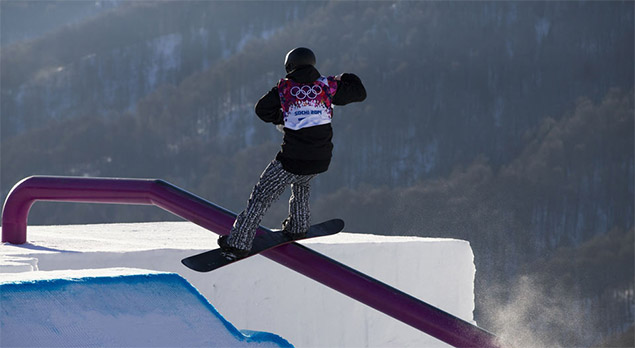
Slopestyle is held on a relatively gentle downhill slope that has a series of specially prepared jumps, obstacles or features that athletes perform tricks on or over. Each rider chooses their own path through the features, and use their display of creativity, skill and strength to impress the judges.
The event's popularity in the X Games and other competitions led to the inclusion of it in the Sochi 2014 Winter Olympics. The British contingent gave a strong showing, producing several top-five finishes in both the men's and women's finals. Jenny Jones topped off these solid performances claiming Britain’s first ever Winter Olympics medal; bronze in the women's snowboard competition.
![]()
Venue
The Slopestyle competition is taking place at Phoenix Snow Park, along with the Halfpipe and Ski/Snowboard Cross.
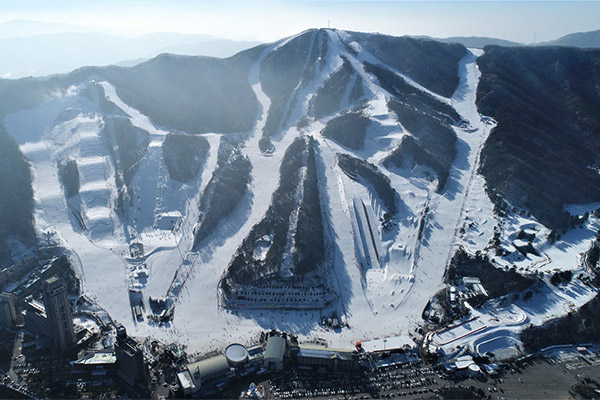
![]()
Course preview
Resorts use specially adapted piste bashers to build modern-day slopestyle courses, shifting huge amounts of snow to create the jumps and features.
The Slopestyle build and test event at the Olympic site
![]()
How does the slopestyle scoring system work?
Each rider gets two runs down the course, with six judges assess their performance on four factors.
- Height of airs
- Rotations
- Technique
- Degree of difficulty
Each judge submits a score with the highest and lowest scores discounted. The four remaining scores are averaged out, and that makes up the score for that run. A maximum score of 100 is possible for a run with an athlete's single best run counting as their final score.
![]()
Slopestyle terminology
- Cork: A rider dips their head below their skis or snowboard while performing a 360 spin (an off-axis rotation or ‘Cork’). If they perform this twice in one jump, it is called a double cork.
- Transition (Tranny): Any sloped areas that ‘transition’ the athlete into or out of a jump or feature.
- Kicker: A jump
- Stomp: A solid landing
- Knuckle: The area after a jump where the flat section meets the downhill transition. If athletes don’t reach the downhill section, it makes it very difficult to land the trick.
- Hang/Air Time: The amount of time an athlete is in the air
- Rail: A metal pipe that athletes jump onto and slide along before jumping off it
- Kinked Rail: A metal rail that includes a flat section in the middle of it – adding difficulty
- Frontboard: A snowboarder travels along a rail with their snowboard and chest facing up the slopes
- Backboard: A snowboarder travels along a rail with their snowboard and chest facing down the slope
- Pretzel: A rider spins onto a rail before sliding down it and spinning off the rail in the opposite direction to that of the initial spin.
- Line: A rider's chosen path
- Goofy or Regular (snowboard specific): The athlete’s left foot is at the front of the snowboard (regular). Goofy is with the right front at the front of the board.
- Fakie or Switch: A skier or snowboarder is riding in the same direction but with their body facing the opposite direction to normal (i.e. skiing backwards)
- Left Side Spin (ski specific): A skier rotates in the air to their left side (anti-clockwise direction)
- Right Side Spin (ski specific): A skier rotates in the air to their right side (clockwise direction)
- Backside Rotation (snowboard specific): A snowboarder rotates in the air with their back driving the rotation. i.e. a regular snowboarder backside spin will be in a clockwise direction
- Frontside Rotation (snowboard specific): A snowboarder rotates in the air with their chest driving the rotation. i.e. for a regular snowboarder a frontside spin will be in an anti-clockwise direction
- Ollie: A skier or snowboarder jumps off the snow
- Straight Air: No trick or spin is performed by an athlete while traveling over a jump
- Revert: An athlete changes direction while in contact with the snow
- Speed Check: A skier or snowboarder performs a sharp and quick turn before carrying on forwards to reduce their speed
- Cab: A skier or snowboarder who performs a spin starting from the switch position.
- Grab: A skier or snowboarder holds onto their ski or snowboard with a hand adding points to their score.
- Double Grab: A skier or snowboarder holds onto their ski or snowboard with both hands, adding difficulty and points to their score.
- Rodeo: An athlete performs a backflip with a sideways rotation.
![]()
Who won in Sochi 2014?
2014 Men’s Snowboard Slopestyle Gold Medal:
Sage Kotsenburg (USA) 93.50
2014 Men’s Ski Slopestyle Gold Medal:
Joss Christensen (USA) 95.80
2014 Women’s Snowboard Slopestyle Gold Medal:
Šárka Pančochová (CZE) 90.50
2014 Women's Ski Slopestyle Gold Medal:
Dara Howell (CAN) 94.20
![]()
British hopefuls to watch out for
Katie Summerhayes: At the last Winter Olympics in Sochi, Katie qualified for the Slopestyle finals in third place- finishing seventh overall in the main event. Going into these games, she is in good form, recently coming second at this year’s Stubai World Cup and looking for two more solid performances in her final competitions before the Olympics.
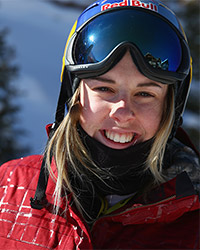
Jamie Nichols: Jamie grew up snowboarding on Halifax dry slope and has been a snowboard professional for the last nine years. Still only 24, he has travelled the world competing in and winning some of the most prestigious competitions. In Sochi, he finished sixth performing well under the pressure of the finals. This time around he is looking to bump himself up into the medals.
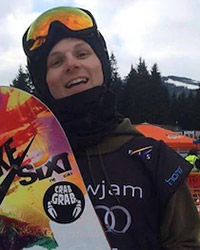
James Woods: Freestyle skier James Woods is one of the biggest hopes for Britain this year, recently winning a slopestyle event in New Zealand and winning gold in X Games last year. In Sochi James was hindered by a hip injury sustained in practice, eventually finishing fifth. He is looking to improve on this and place in the medals showcasing his unique tricks, style and loud personality.
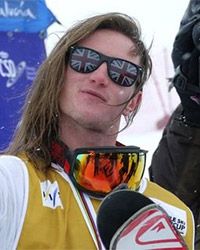
Billy Morgan: With a background in gymnastics, Billy naturally took to snowboarding aged 14. He was soon winning competitions and performing world-firsts (a triple rodeo and a quad cork 1800). In the Sochi Semi-Finals, he placed first before crashing twice in the final ending up in tenth. With a mistake-free run, Billy has the potential to medal this time around.
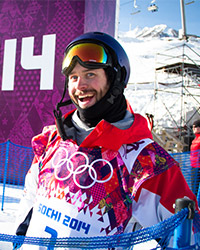
![]()
PyeongChang 2018 Slopestyle dates and times
*(PyeongChang is 9 hours ahead of the UK)
Feb 10 - Snowboard
- Men's Slopestyle Qualification - Phoenix Snow Park 10:00 - 14:30 (UK 01.00 - 05:30)
Feb 11 - Snowboard
- Men's Slopestyle Finals - Phoenix Snow Park 10:00 - 11:45 (UK 01.00 - 02:45)
- Women's Slopestyle Qualification - Phoenix Snow Park 13:30 - 15:35 (UK 04.30 - 06:35)
Feb 12 - Snowboard
- Women's Slopestyle Finals - Phoenix Snow Park 10:00 - 11:45 (UK 01.00 - 02:45)
Feb 17 - Freestyle Skiing
- Women’s Ski Slopestyle Qualifications - Phoenix Snow Park 10:00 - 11:40 (UK 01.00 - 02:40)
- Women's Ski Slopestyle Finals - Phoenix Snow Park 13:00-14:35 (UK 04.00 - 05:35)
Feb 18 - Freestyle Skiing
- Men's Ski Slopestyle Qualifications - Phoenix Snow Park 10:00-12:05 (UK 01.00 - 03:05)
- Men’s Ski Slopestyle Finals - Phoenix Snow Park 13:15-14:50 (UK 04.15 - 05:50)
![]()
Find out more about our PyeongChang hopefuls and #WhatItTakes to become an Olympian.
![]()
About the Author:Pete Fletcher - Outdoor ExpertPete grew up hiking most of the trails in the Lake District before being introduced to skiing. A decade later and you're most likely to find him snowboarding, skateboarding or making a mean coffee. |






